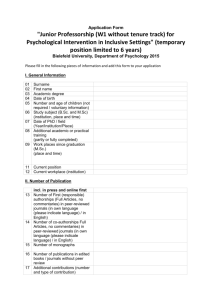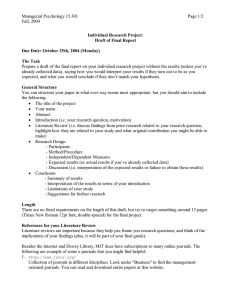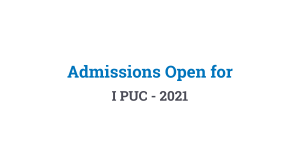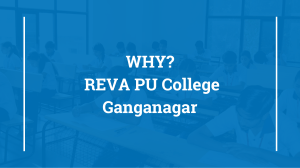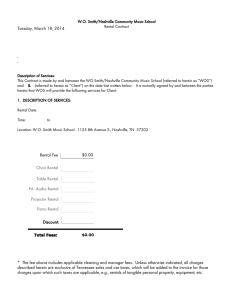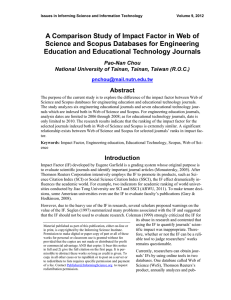Beware of phony prophets who pretend to teach scientific writing CORRESPONDENCE
advertisement
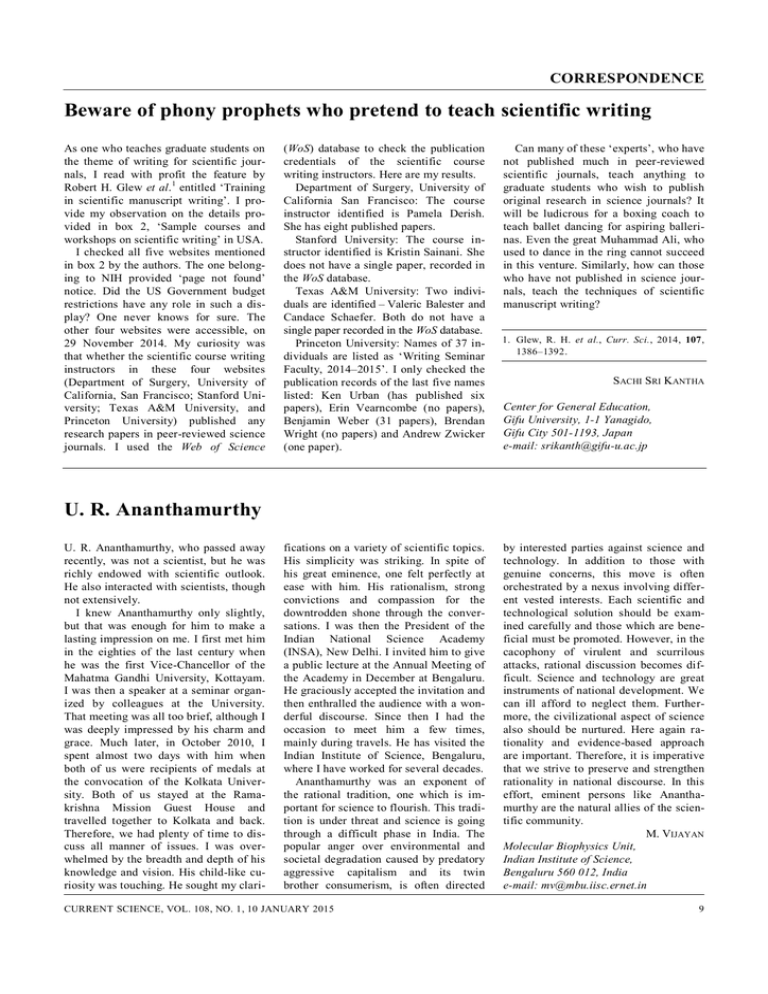
CORRESPONDENCE Beware of phony prophets who pretend to teach scientific writing As one who teaches graduate students on the theme of writing for scientific journals, I read with profit the feature by Robert H. Glew et al. 1 entitled ‘Training in scientific manuscript writing’. I provide my observation on the details provided in box 2, ‘Sample courses and workshops on scientific writing’ in USA. I checked all five websites mentioned in box 2 by the authors. The one belonging to NIH provided ‘page not found’ notice. Did the US Government budget restrictions have any role in such a display? One never knows for sure. The other four websites were accessible, on 29 November 2014. My curiosity was that whether the scientific course writing instructors in these four websites (Department of Surgery, University of California, San Francisco; Stanford University; Texas A&M University, and Princeton University) published any research papers in peer-reviewed science journals. I used the Web of Science (WoS) database to check the publication credentials of the scientific course writing instructors. Here are my results. Department of Surgery, University of California San Francisco: The course instructor identified is Pamela Derish. She has eight published papers. Stanford University: The course instructor identified is Kristin Sainani. She does not have a single paper, recorded in the WoS database. Texas A&M University: Two individuals are identified – Valeric Balester and Candace Schaefer. Both do not have a single paper recorded in the WoS database. Princeton University: Names of 37 individuals are listed as ‘Writing Seminar Faculty, 2014–2015’. I only checked the publication records of the last five names listed: Ken Urban (has published six papers), Erin Vearncombe (no papers), Benjamin Weber (31 papers), Brendan Wright (no papers) and Andrew Zwicker (one paper). Can many of these ‘experts’, who have not published much in peer-reviewed scientific journals, teach anything to graduate students who wish to publish original research in science journals? It will be ludicrous for a boxing coach to teach ballet dancing for aspiring ballerinas. Even the great Muhammad Ali, who used to dance in the ring cannot succeed in this venture. Similarly, how can those who have not published in science journals, teach the techniques of scientific manuscript writing? 1. Glew, R. H. et al., Curr. Sci., 2014, 107, 1386–1392. SACHI SRI KANTHA Center for General Education, Gifu University, 1-1 Yanagido, Gifu City 501-1193, Japan e-mail: srikanth@gifu-u.ac.jp U. R. Ananthamurthy U. R. Ananthamurthy, who passed away recently, was not a scientist, but he was richly endowed with scientific outlook. He also interacted with scientists, though not extensively. I knew Ananthamurthy only slightly, but that was enough for him to make a lasting impression on me. I first met him in the eighties of the last century when he was the first Vice-Chancellor of the Mahatma Gandhi University, Kottayam. I was then a speaker at a seminar organized by colleagues at the University. That meeting was all too brief, although I was deeply impressed by his charm and grace. Much later, in October 2010, I spent almost two days with him when both of us were recipients of medals at the convocation of the Kolkata University. Both of us stayed at the Ramakrishna Mission Guest House and travelled together to Kolkata and back. Therefore, we had plenty of time to discuss all manner of issues. I was overwhelmed by the breadth and depth of his knowledge and vision. His child-like curiosity was touching. He sought my clari- fications on a variety of scientific topics. His simplicity was striking. In spite of his great eminence, one felt perfectly at ease with him. His rationalism, strong convictions and compassion for the downtrodden shone through the conversations. I was then the President of the Indian National Science Academy (INSA), New Delhi. I invited him to give a public lecture at the Annual Meeting of the Academy in December at Bengaluru. He graciously accepted the invitation and then enthralled the audience with a wonderful discourse. Since then I had the occasion to meet him a few times, mainly during travels. He has visited the Indian Institute of Science, Bengaluru, where I have worked for several decades. Ananthamurthy was an exponent of the rational tradition, one which is important for science to flourish. This tradition is under threat and science is going through a difficult phase in India. The popular anger over environmental and societal degradation caused by predatory aggressive capitalism and its twin brother consumerism, is often directed CURRENT SCIENCE, VOL. 108, NO. 1, 10 JANUARY 2015 by interested parties against science and technology. In addition to those with genuine concerns, this move is often orchestrated by a nexus involving different vested interests. Each scientific and technological solution should be examined carefully and those which are beneficial must be promoted. However, in the cacophony of virulent and scurrilous attacks, rational discussion becomes difficult. Science and technology are great instruments of national development. We can ill afford to neglect them. Furthermore, the civilizational aspect of science also should be nurtured. Here again rationality and evidence-based approach are important. Therefore, it is imperative that we strive to preserve and strengthen rationality in national discourse. In this effort, eminent persons like Ananthamurthy are the natural allies of the scientific community. M. VIJAYAN Molecular Biophysics Unit, Indian Institute of Science, Bengaluru 560 012, India e-mail: mv@mbu.iisc.ernet.in 9


